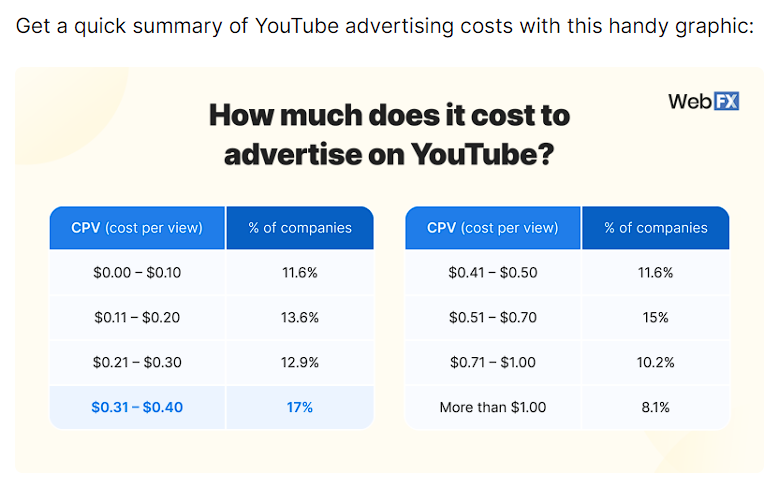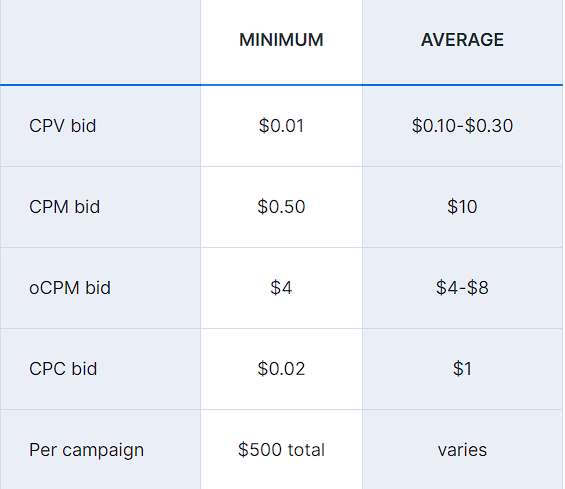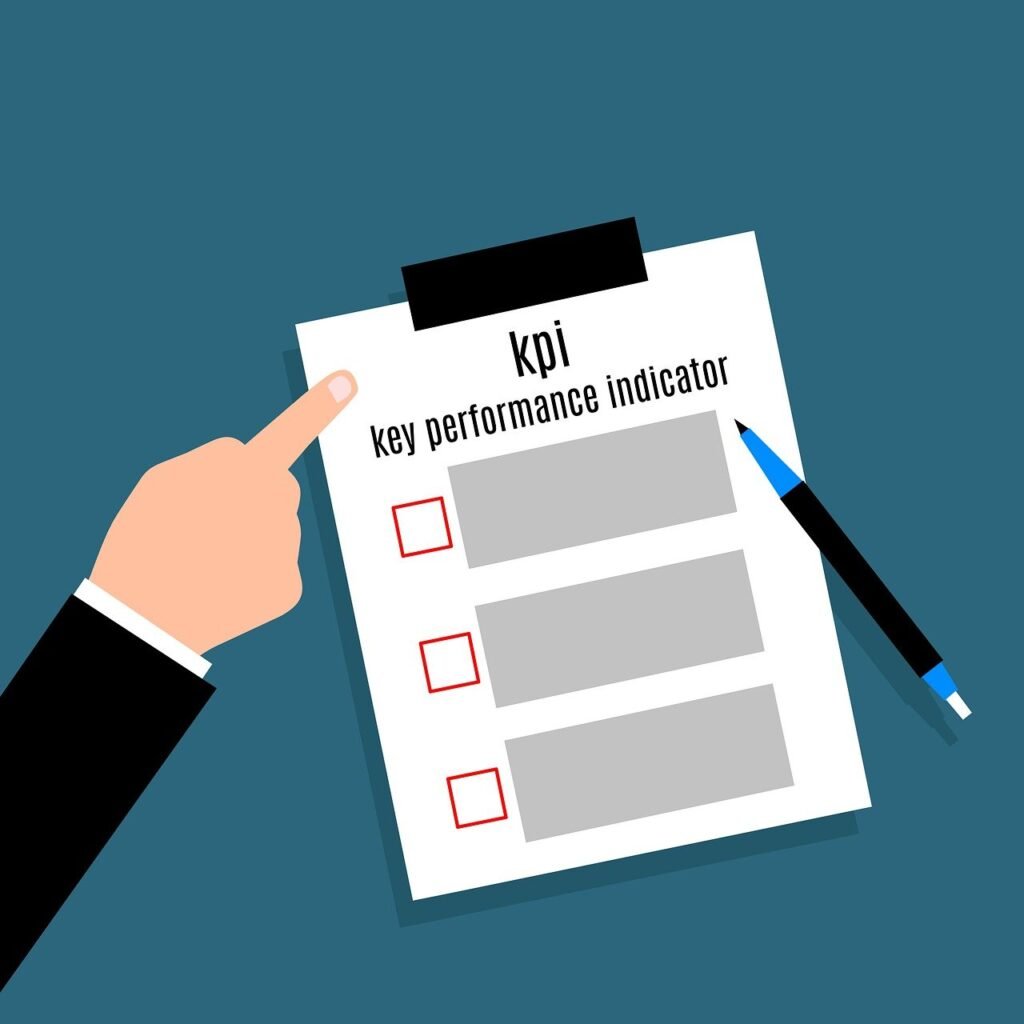This Article has been revised, edited and added to, by Poulomi Chakraborty.
- Choosing the Right Platform: A Look at User Demographics and Engagement
- Top Platforms for Influencer Marketing
- Maximizing Influencer Partnerships: Strategies for Effective Collaboration
- Crafting a Clear Collaboration Strategy
- Building Relationships with Influencers
- Establishing Clear Communication and Expectations
- Utilizing Cross-Promotion Techniques
- Measuring Campaign Effectiveness
- Tailoring Partnerships to Match Brand Evolution
- Integrating Influencers Beyond Product Endorsements
- Cultivating Long-Term Relationships
- Implementing Collaborative Co-Creation
- Leveraging Data-Driven Insights for Continuous Improvement
- Leveraging Content Creativity: Enhancing Engagement Through Innovative Strategies
- Embracing Video Content for Deeper Engagement
- Harnessing the Power of Storytelling
- Interactive Content to Foster Audience Participation
- Creating Hashtag Campaigns for Wider Reach
- Constant Innovation and Adaptation
- Emphasizing Authenticity in Storytelling
- Innovating with Mixed Media Content
- Fostering Community Through Interactive Content
- Utilizing Data for Creative Direction
- Integrating Cross-Platform Storytelling
- Optimizing Influencer Selection: Advanced Tactics for Identifying and Collaborating with the Right Voices
- Measuring Success and Scaling Influencer Campaigns: Key Metrics and Strategies
- Conclusion
In the buzzing world of digital marketing, influencer marketing has carved out its niche as a powerhouse for enhancing brand visibility and forging genuine customer connections. The right platform can dramatically amplify your reach and resonate your brand’s voice through the most influential figures in your industry. In this guide, we will delve into the top platforms that are shaping the future of influencer marketing, offering tools and features that cater to brands aiming to elevate their engagement and awareness levels.
Choosing the Right Platform: A Look at User Demographics and Engagement

When selecting a platform for influencer marketing, understanding the landscape of user demographics and engagement patterns is crucial. Each platform possesses unique characteristics that can either boost or blunt your marketing efforts. Let’s break down how these factors play a pivotal role in choosing the right platform for your campaign.
Understanding User Demographics
Different platforms attract different user bases, and knowing where your target audience spends their time online is the first step in crafting an effective influencer marketing strategy. For instance, platforms like Instagram and TikTok skew towards a younger demographic, making them ideal for brands targeting Gen Z and younger Millennials.
On the other hand, LinkedIn attracts professionals and B2B audiences, offering a ripe environment for industry-specific influencers to connect with a more mature audience.
The demographics don’t stop at age; they also extend to interests, geographic location, and even the type of content users prefer. YouTube, with its expansive reach, attracts a wide array of interests from tech tutorials to lifestyle vlogging, making it a versatile platform for long-form content creators.
Meanwhile, Pinterest holds sway over niche markets, particularly in fashion, home decor, and DIY projects, appealing mostly to women aged 25-54.
Examining Engagement Patterns
Engagement is the currency of the digital marketing realm, and different platforms offer varying levels of interaction. Instagram, for example, thrives on high visual engagement through likes, comments, and shares, making it a hotspot for fashion, beauty, and lifestyle brands.
The platform’s introduction of Instagram Stories and Reels has further enhanced its engagement capabilities, allowing influencers to create more dynamic and interactive content.
Conversely, Twitter’s rapid-fire conversation style is best suited for real-time engagement, such as live events, breaking news, or community discussions. The platform’s hashtag feature allows brands to tap into trending topics and inject themselves into broader conversations, which can be a potent tactic for increasing visibility and engagement.
Analyzing the Match for Your Brand
Choosing the right platform goes beyond demographics and engagement; it also involves aligning with the platform’s core aesthetics and functionalities. For a luxury brand, the polished and visually-driven interface of Instagram might be more appropriate than the text-heavy layout of Twitter.
Similarly, a tech company might find more value in YouTube for deep-dive product reviews and tutorials, leveraging the platform’s capacity for detailed, long-form content that showcases their expertise and innovation.
The key is to match your brand’s identity and goals with the platform that best amplifies these elements. This alignment not only enhances the authenticity of your influencer campaigns but also increases the likelihood of resonating deeply with your targeted audience, fostering stronger connections and driving meaningful engagements.
Deep Dive into User Demographics
The demographics of a platform can provide invaluable insights into the type of audience you can expect to engage. For startup founders, this involves more than just knowing the age and gender distribution of users—it’s about understanding lifestyle, spending habits, and preferences.
For instance, if your startup offers eco-friendly products, platforms like Instagram and Pinterest, known for their strong communities interested in sustainability, might be more appropriate than more general platforms like Twitter.
In addition to demographic data, geographical information can be critical, especially if your product or service is tailored to certain locales. Platforms like Facebook offer robust geographic targeting, allowing you to engage with users based on very specific regional data. This can be particularly useful for startups looking to establish a strong local presence before scaling globally.
Analyzing Engagement Patterns
Engagement patterns tell you not just who is on the platform, but how they interact with content. This is crucial for startups as it directs the style and format of content that will most likely resonate. For example, platforms like TikTok and Instagram are driven by short-form, visually engaging content, while YouTube favors longer, more detailed explorations.
A startup in the tech industry might find more engaged viewers on YouTube where detailed tutorials or product reviews thrive, whereas a fashion startup might see better engagement through the visually-rich and style-oriented feeds of Instagram.
Engagement isn’t just about views or likes; it’s also about the quality of interactions. Platforms with features that allow deeper interactions—such as Instagram’s “Swipe Up” feature in Stories or YouTube’s comment sections—can be more advantageous for startups aiming to build community around their brand. These interactions provide more data and qualitative feedback from potential customers, which is gold dust for refining product offerings and customer service approaches.
Strategic Considerations for Platform Choice
When choosing a platform, consider the compatibility of the platform’s core features with your marketing objectives. For instance, if live demonstrations of your product are a key selling point, platforms with robust live streaming services like Facebook Live or Twitch could be integral.
Similarly, if customer education is essential, the comprehensive content capabilities of YouTube might be more suitable than the more ephemeral Snapchat.
Moreover, it’s not just about picking one platform. Startups should consider a multi-platform approach where different aspects of their value proposition are highlighted across various platforms. This not only broadens reach but also taps into the unique strengths of each platform to support different facets of the marketing strategy.
Finally, while it’s important to focus on where you can find your audience, it’s equally important to consider where you might not be looking. Emerging platforms can offer untapped opportunities with less competition and potentially lower costs for engagement.
For a startup, being an early adopter of a new platform can establish brand presence and leadership in innovative marketing long before the market becomes saturated.
By strategically selecting and utilizing the right social media platforms based on detailed demographic and engagement insights, startup founders can craft more targeted, effective, and engaging marketing campaigns.
This tailored approach not only optimizes resources but also maximizes impact, a crucial combination for the growth and sustainability of any new venture.
Top Platforms for Influencer Marketing
1) Instagram: A Powerhouse for Visual Storytelling
Instagram has established itself as a cornerstone in the influencer marketing ecosystem, known for its visually-driven platform that allows brands to connect with a wide array of audiences.
With over a billion monthly active users, Instagram offers unparalleled opportunities for startups to boost brand awareness and engagement through curated visual content. Its user-friendly interface and various content formats make it an ideal platform for creative storytelling and interactive marketing strategies.
Features
Instagram boasts a rich set of features that enable brands and influencers to create engaging and dynamic content. These include the main feed for photos and videos, Stories for ephemeral content, IGTV for longer videos, Reels for short, engaging clips, and Live for real-time interaction with followers.
The platform also provides comprehensive analytics tools through Instagram Insights, allowing brands to track the performance of their posts, Stories, and ads. Additionally, Instagram’s shopping features enable seamless integration of e-commerce, turning posts into direct sales opportunities.
Pricing
Instagram offers a range of advertising options to suit different budget levels. From cost-per-click (CPC) to cost-per-impression (CPM), brands can choose the pricing model that aligns with their marketing goals and budget. Here is a screenshot of Instagram’s pricing page for a detailed view of their advertising costs and options:

Pros and Cons
Instagram’s strengths lie in its high engagement rates, visual-centric interface, and diverse content formats, making it highly effective for brand storytelling and product showcasing. The platform’s algorithm promotes content that generates high interaction, thus rewarding quality and creativity.
However, the cons include the competitive nature of the platform, requiring brands to consistently produce high-quality content to stand out. Additionally, changes to the algorithm can impact organic reach, making it essential for brands to stay adaptable and innovative.
Ideal User Base
Instagram’s user base skews younger, with a significant proportion of users falling between the ages of 18-34, making it ideal for brands targeting Gen Z and Millennials.
However, the platform’s versatility also attracts a broad range of interests and demographics, from fashion and beauty enthusiasts to fitness buffs and tech aficionados. Startups looking to engage with a visually-oriented audience who value authenticity and creativity will find Instagram particularly beneficial.
2) YouTube: The Epicenter of Video Content
YouTube stands as the premier platform for video content, boasting over two billion monthly active users and serving as a critical hub for influencer marketing. For startups, YouTube offers a unique opportunity to engage audiences through long-form content, tutorials, product reviews, and vlogs.
Its vast user base and the power of video content make YouTube an indispensable tool for building brand awareness and fostering deep connections with consumers.
Features
YouTube’s extensive feature set includes the ability to upload and share videos, live streaming, community posts, and Stories. The platform supports various content types, from short clips to hour-long deep dives, catering to diverse audience preferences.
YouTube Analytics provides comprehensive insights into viewer behavior, engagement metrics, and traffic sources, enabling brands to refine their content strategy.
Additionally, YouTube’s monetization options, such as ad revenue sharing, channel memberships, and Super Chat, offer influencers multiple revenue streams, enhancing their incentive to produce quality content.
Pricing
YouTube offers several advertising formats, including skippable and non-skippable ads, bumper ads, and sponsored cards. These options cater to different campaign goals and budget sizes, from brand awareness to direct response marketing.
Here’s a screenshot of YouTube’s pricing page for a detailed view of their advertising costs and options:

Pros and Cons
YouTube’s strengths lie in its vast reach, extensive content capabilities, and the depth of engagement it fosters through video. The platform allows brands to tell complex stories and build a narrative over time, which is particularly effective for explaining intricate products or services.
Additionally, YouTube’s search engine capabilities enhance discoverability, allowing content to be found long after it’s posted. However, the cons include the high production costs associated with quality video content and the competitive nature of the platform, which requires consistent effort to stand out.
Furthermore, the algorithm changes can impact video visibility, necessitating a dynamic and adaptable content strategy.
Ideal User Base
YouTube attracts a broad demographic, making it suitable for a wide range of brands. Its user base includes both younger audiences, such as Gen Z and Millennials, and older demographics, providing a versatile platform for targeting diverse consumer segments.
Startups in tech, education, beauty, fitness, and lifestyle sectors will particularly benefit from YouTube’s capabilities, as these industries thrive on detailed tutorials, product demonstrations, and personal storytelling. Brands looking to build a loyal following through in-depth content and community engagement will find YouTube an ideal platform.
3) TikTok: The Vanguard of Short-Form Content
TikTok has rapidly become a dominant force in the social media landscape, particularly known for its short-form video content that captures the attention of a highly engaged audience. With over one billion monthly active users, TikTok offers a unique platform for brands to create viral content and connect with a younger demographic.
For startups, TikTok’s algorithm-driven feed and emphasis on creativity provide a fertile ground for innovative marketing strategies that can significantly boost brand awareness and engagement.
Features
TikTok’s platform is designed to foster creativity and quick engagement. Key features include the For You Page (FYP), where users discover new content through a personalized feed driven by their interests and interactions.
The platform supports a variety of content formats, including short videos up to three minutes long, duets, stitching, and live streaming. TikTok also offers robust editing tools with numerous filters, effects, and music options, enabling creators to produce high-quality videos directly within the app.
Additionally, TikTok Analytics provides detailed insights into video performance, audience demographics, and engagement metrics.
Pricing
TikTok offers a range of advertising options, including in-feed ads, branded hashtag challenges, branded effects, and top-view ads. These options cater to different campaign goals and budget sizes, from broad brand awareness to direct engagement. Here’s a screenshot of TikTok’s pricing page for a detailed view of their advertising costs and options:


Pros and Cons
TikTok’s main advantage is its ability to generate rapid and widespread engagement through viral content. The platform’s algorithm is highly effective at promoting content based on user preferences, which can lead to significant exposure for brands with compelling and creative videos.
Additionally, TikTok’s diverse range of content formats and editing tools empowers brands to experiment and innovate. However, the cons include the need for constant creativity and high-quality production to maintain visibility and engagement.
The platform’s younger user base might also limit its effectiveness for brands targeting older demographics. Moreover, understanding and keeping up with trending content can be challenging and requires a dedicated effort.
Ideal User Base
TikTok’s user base is predominantly young, with a large proportion of users aged 16-24, making it ideal for brands targeting Gen Z and younger Millennials. The platform is particularly effective for industries such as fashion, beauty, entertainment, food, and lifestyle, where visual appeal and creativity are paramount.
Startups looking to build a vibrant and engaged community around their brand will find TikTok especially beneficial. Its ability to turn niche content into mainstream trends makes it a powerful tool for brands aiming to quickly scale their visibility and engagement.
4) Twitter: The Pulse of Real-Time Conversations
Twitter stands out as a vital platform for real-time conversations, providing a dynamic space for brands to engage with their audience through timely updates and interactions. With over 330 million monthly active users, Twitter excels in facilitating instant communication and trending discussions.
For startups, Twitter’s fast-paced environment and emphasis on brevity make it an excellent platform for building brand presence, engaging with customers, and tapping into broader conversations that can amplify brand visibility.
Features
Twitter’s core features revolve around its real-time nature and brevity. Tweets, limited to 280 characters, allow for concise messaging and quick engagement. The platform supports various content types, including text, images, videos, polls, and threads for more in-depth discussions.
Twitter Moments curates stories from tweets to highlight trending topics, while Twitter Spaces offers live audio conversations. Additionally, the platform provides robust analytics tools that offer insights into tweet performance, audience demographics, and engagement trends, helping brands fine-tune their strategies.
Pricing
Twitter offers several advertising options, such as promoted tweets, promoted accounts, and promoted trends, catering to different marketing goals and budget sizes. These options help brands increase their visibility and engagement on the platform. Here’s a screenshot of Twitter’s pricing page for a detailed view of their advertising costs and options:

Pros and Cons
Twitter’s strengths lie in its immediacy and the ability to engage with audiences in real time. The platform is ideal for live updates, customer service interactions, and participating in trending conversations, which can significantly enhance brand visibility and engagement.
Twitter’s hashtag functionality allows brands to join and create trending topics, broadening their reach. However, the cons include the fast-paced nature of the platform, which requires constant monitoring and timely responses to maintain engagement. Additionally, the character limit can be a constraint for conveying detailed messages, necessitating a concise and impactful communication style.
Ideal User Base
Twitter attracts a diverse user base, making it suitable for a wide range of brands. It is particularly effective for startups targeting tech-savvy users, professionals, and news-oriented audiences. Industries such as technology, media, entertainment, and politics find Twitter’s real-time engagement capabilities especially beneficial.
Startups looking to establish thought leadership, provide instant updates, and engage in customer conversations will find Twitter an invaluable tool. The platform’s ability to foster direct interactions and participate in trending discussions makes it an excellent choice for brands aiming to create a dynamic and interactive online presence.
5) LinkedIn: The Hub for Professional Networking
LinkedIn has carved out a unique space in the social media landscape as the go-to platform for professional networking and B2B marketing. With over 774 million users, LinkedIn is an invaluable tool for startups looking to connect with industry professionals, establish thought leadership, and engage with a professional audience.
The platform’s focus on professional development and industry-specific content makes it ideal for B2B influencer marketing and establishing a strong brand presence in the business community.
Features
LinkedIn offers a suite of features designed to facilitate professional networking and content sharing. These include LinkedIn Profiles for individuals and LinkedIn Pages for companies, enabling brands to share updates, articles, and multimedia content.
LinkedIn Groups provide a space for industry-specific discussions and networking, while LinkedIn Pulse offers a platform for publishing long-form articles. The platform also supports a variety of advertising options, such as Sponsored Content, Sponsored InMail, and Display Ads, to help brands reach their target audience effectively.
LinkedIn Analytics provides detailed insights into post-performance, audience demographics, and engagement metrics, allowing brands to optimize their strategies.
Pricing
LinkedIn’s advertising options cater to different marketing goals and budget sizes. From cost-per-click (CPC) to cost-per-impression (CPM) models, LinkedIn offers flexible pricing to suit various campaign objectives. Here’s a screenshot of LinkedIn’s pricing page for a detailed view of their advertising costs and options:


Pros and Cons
LinkedIn’s strengths lie in its ability to connect brands with a professional audience and facilitate B2B marketing. The platform’s focus on professional development and industry insights makes it an ideal space for thought leadership and networking.
LinkedIn’s robust analytics and targeted advertising options allow for precise audience targeting and campaign optimization. However, the cons include the higher cost of advertising compared to other platforms and the need for a more formal and professional content strategy.
Additionally, LinkedIn’s user base, while extensive, is primarily focused on professional development, which may not be suitable for all types of consumer brands.
Ideal User Base
LinkedIn’s user base is predominantly composed of professionals, making it ideal for B2B brands, startups looking to establish industry credibility, and those targeting a professional audience. Industries such as technology, finance, healthcare, and education find LinkedIn particularly beneficial for networking, lead generation, and thought leadership.
Startups aiming to connect with decision-makers, industry leaders, and professionals will find LinkedIn an indispensable tool. The platform’s emphasis on professional growth and industry insights makes it a prime choice for brands looking to build a strong, credible presence in the business community.
Maximizing Influencer Partnerships: Strategies for Effective Collaboration

Building successful influencer partnerships goes beyond just selecting the right platform. It involves strategic planning, clear communication, and an understanding of mutual benefits. Here, we explore how brands can maximize their influencer collaborations to boost both awareness and engagement effectively.
Crafting a Clear Collaboration Strategy
Before reaching out to potential influencers, it’s crucial for brands to define their campaign goals and the key messages they want to convey. Whether it’s increasing brand awareness, launching a new product, or driving sales, having a clear objective will guide the selection of influencers and the design of the campaign.
Additionally, understanding the influencer’s audience and ensuring there is a strong overlap with your target market can significantly impact the campaign’s success.
Building Relationships with Influencers
Influencer marketing is not just a business transaction; it’s about building relationships. Engaging with potential influencers through their posts, understanding their content style, and respecting their creative freedom are vital steps in forming a genuine partnership.
When influencers feel valued and understood, they are more likely to create authentic content that resonates with their followers and positively reflects your brand.
Establishing Clear Communication and Expectations
Clear communication is the foundation of any successful partnership. This includes detailed briefings on the campaign goals, target audience, expected deliverables, and timelines. Transparency about budgets and compensation is also crucial to avoid any misunderstandings.
Providing influencers with a creative brief that includes brand guidelines and key message points while allowing them the creative freedom to personalize the content can result in a more genuine and effective promotion.
Utilizing Cross-Promotion Techniques
Cross-promotion is a tactic that can amplify the results of your influencer marketing efforts. Encouraging influencers to share their content across different platforms, even if the primary campaign is on one platform, can expand reach and engagement.
Additionally, brands can leverage their channels to share influencer content, creating a reciprocal relationship that benefits both parties. This approach not only increases content visibility but also enhances the credibility of both the influencer and the brand through association.
Measuring Campaign Effectiveness
To truly maximize influencer partnerships, brands need to track the effectiveness of their campaigns. This involves monitoring metrics such as engagement rates, reach, conversions, and return on investment (ROI).
Utilizing platform analytics tools or third-party tracking software can provide insights into how well the campaign is performing and what adjustments may be needed to optimize results.
Tailoring Partnerships to Match Brand Evolution
One key strategy is to tailor influencer partnerships to match the stage of your brand‘s evolution. Early-stage startups might benefit from partnering with micro-influencers who can engage niche audiences at a lower cost and with higher engagement rates.
As your brand grows, you may start collaborating with more established influencers whose broader reach can accelerate brand visibility and market penetration.
The dynamic nature of startups often requires adaptability in marketing tactics. Influencer collaborations should be flexible, allowing for shifts in strategy based on product evolution, market feedback, and the changing competitive landscape.
Regularly revisiting and revising the terms and goals of influencer engagements can keep these partnerships vibrant and relevant.
Integrating Influencers Beyond Product Endorsements
Moving beyond traditional product endorsements, startups should consider integrating influencers into various aspects of the marketing and product development processes.
Influencers can be involved in product design feedback, beta testing new offerings, or participating in corporate social responsibility initiatives. Such deeper involvement not only enriches the content they share but also enhances their authenticity and commitment to the brand.
Involving influencers in content creation beyond just their platforms can also be beneficial. For instance, having influencers participate in your brand’s webinars, podcasts, or guest blogs can provide fresh content and perspectives to your audience.
This approach helps in building a content ecosystem that supports both the brand‘s and the influencer’s growth.
Cultivating Long-Term Relationships
For startups, cultivating long-term relationships with influencers can lead to sustained brand loyalty and customer trust. Long-term collaborations allow influencers to become genuine brand advocates who understand and grow with the brand.
This ongoing partnership can lead to more authentic and consistent messaging, which is highly effective in building and maintaining consumer trust.
These relationships can be fostered through regular communication, providing exclusive updates about the company’s direction, and involving influencers in strategic discussions where appropriate.
Recognizing and rewarding loyalty, such as offering performance-based incentives or first access to new products, can also strengthen these ties.
Implementing Collaborative Co-Creation
Engaging influencers in co-creation projects, where they have a say in the content’s creative direction or even in the product development, can lead to more meaningful and impactful campaigns. This collaboration encourages a sense of ownership and pride in the influencers, making them more invested in the campaign’s success.
Co-creation can extend to various forms of content, such as joint web series, co-hosted events, or collaborative product lines. These initiatives not only enhance the content’s appeal but also broaden its reach by leveraging the combined networks of both the brand and the influencer.
Leveraging Data-Driven Insights for Continuous Improvement
Utilizing data-driven insights to analyze the performance of influencer campaigns is crucial for continuous improvement. Metrics such as engagement rate, conversion rate, and audience growth can provide actionable insights into what works and what doesn’t. This ongoing evaluation helps startups to refine their influencer strategy, optimize budget allocation, and enhance overall marketing effectiveness.
By adopting these advanced strategies, startups can maximize their influencer partnerships, turning them into a cornerstone of their marketing strategy. These collaborations, when managed well, not only drive brand awareness and sales but also build a foundation of authenticity and loyalty among target audiences.

Related: Check out our free SEO suite

Leveraging Content Creativity: Enhancing Engagement Through Innovative Strategies
In the realm of influencer marketing, content is king. To stand out in a saturated market, brands and influencers must push the envelope of creativity to captivate and engage audiences. This section delves into innovative content strategies that can significantly enhance the impact of your influencer marketing campaigns.
Embracing Video Content for Deeper Engagement
Video content has proven to be one of the most engaging forms of media across various platforms. From YouTube vlogs and tutorials to Instagram Stories and TikTok challenges, videos offer a dynamic way to showcase products, tell stories, and connect with audiences on an emotional level.
Encouraging influencers to create video content that highlights their genuine experiences with your brand can lead to higher engagement rates and more profound brand association.
For instance, behind-the-scenes videos, “day in the life” vlogs, or product unboxing videos can give audiences an insider view of the influencer’s genuine interaction with your brand, adding a layer of trust and authenticity.
Harnessing the Power of Storytelling
Storytelling is a powerful tool in influencer marketing. Influencers who can weave your brand into their personal narratives or create compelling stories around your products are more likely to engage their followers and elicit emotional responses. This strategy can be particularly effective on platforms like Instagram and Snapchat, where storytelling can be visually driven and highly personal.
Encourage influencers to tell their unique stories of how your product fits into their lives or solves a particular problem. These narratives should be authentic and resonate well with the influencer’s audience to foster a stronger connection and recall with the brand.
Interactive Content to Foster Audience Participation
Interactive content such as polls, quizzes, and challenges can significantly increase audience engagement by making them active participants in the content. Platforms like Instagram and TikTok offer built-in features for creating interactive posts and stories.
By integrating these features into your influencer campaigns, you can not only engage the audience but also gather valuable feedback and insights from them.
For example, influencers can use Instagram polls to ask their followers about their preferences regarding your product or to choose between different product options. This interaction not only increases engagement but also gives the audience a sense of involvement in the influencer’s content and, by extension, your brand.
Creating Hashtag Campaigns for Wider Reach
Hashtag campaigns are a fantastic way to generate buzz and encourage user-generated content. By creating a unique and catchy hashtag for your campaign, you can encourage followers to create their content around your brand, increasing your campaign’s reach and engagement. This strategy works exceptionally well on platforms like Instagram and Twitter, where hashtags significantly influence discoverability.
Constant Innovation and Adaptation
The digital landscape is ever-evolving, and so are the preferences of online audiences. Keeping abreast of the latest trends, platform updates, and audience behaviors is crucial for maintaining the effectiveness of your influencer marketing strategies.
Regularly experimenting with new types of content, adapting to changes in platform algorithms, and innovating engagement techniques can help maintain the freshness and relevance of your campaigns.
Emphasizing Authenticity in Storytelling
At the heart of creative content is authenticity, particularly effective in the startup ecosystem where building trust is paramount. Encouraging influencers to share genuine stories about their experiences with your product or service not only adds credibility but also increases relatability among potential customers.
This strategy should involve influencers using personal anecdotes or behind-the-scenes glimpses that reflect the real-life benefits or the problem-solving aspects of your offerings.
Consider facilitating sessions where influencers can experience your product firsthand in a real-world setting. Documenting these experiences through video diaries or live-stream sessions can create an immersive narrative that captivates audiences more effectively than standard promotional content.
Innovating with Mixed Media Content
To stand out, diversifying the types of media used in your influencer campaigns can make a significant impact. Beyond standard photos and videos, consider incorporating infographics, podcasts, and interactive elements like augmented reality (AR) experiences.
For instance, an AR filter that allows users to virtually interact with your product can provide a novel and memorable way for influencers to present your brand to their followers.
Mixed media content not only enriches the user experience but also caters to different preferences within your target audience, increasing the likelihood of engaging a broader demographic. This approach keeps the content fresh and exciting, encouraging users to return and engage more deeply with the brand over time.
Fostering Community Through Interactive Content
Creating interactive content that invites audience participation can transform passive viewers into active participants. Engaging users through contests, live Q&A sessions with influencers, or user-generated content challenges can foster a vibrant community around your brand.
This not only boosts engagement but also builds a sense of belonging among users, which can be incredibly valuable for startups looking to establish a loyal customer base.
Interactive campaigns should encourage creativity and reward participation, possibly through giveaways or public recognition on your platforms. These initiatives can make users feel valued and more connected to your brand, enhancing customer retention.
Utilizing Data for Creative Direction
Leveraging data to drive creative decisions is another strategy that can significantly enhance content effectiveness. Analyze engagement metrics from previous campaigns to identify what types of content resonate most with your audience. This insight allows you to tailor future content more precisely, focusing on themes, formats, and messaging that have proven successful.
In addition to historical data, consider real-time feedback mechanisms like polls or reaction features to gauge audience interest in various content types during campaigns. This responsive approach enables you to adapt your content strategy dynamically, keeping your campaigns aligned with audience preferences.
Integrating Cross-Platform Storytelling
While maintaining a strong presence on one platform can be beneficial, integrating your storytelling across multiple platforms can amplify your reach and reinforce your message. Each platform offers unique features that can highlight different aspects of your story.
For example, Instagram can showcase high-quality visuals of your product, while Twitter can be used to highlight customer testimonials and quick updates.
Cross-platform storytelling not only expands your reach but also provides multiple touchpoints for your audience to interact with your brand. This holistic approach ensures a consistent narrative across all channels, which is crucial for brand recognition and message retention.
By leveraging these innovative content strategies, startups can create influencer marketing campaigns that are not only creative and engaging but also strategically aligned with their growth objectives. These practices help in cultivating an authentic and enthusiastic community, driving both engagement and conversion.
Optimizing Influencer Selection: Advanced Tactics for Identifying and Collaborating with the Right Voices

Choosing the right influencer is more than just matching demographics and follower counts; it involves a deep understanding of the influencer’s reach, relevance, resonance, and real influence. This section explores advanced tactics for optimizing influencer selection to ensure that every collaboration moves the needle for your brand.
Analyzing Influencer Engagement Rates
Beyond the number of followers, an influencer’s engagement rate is a crucial metric for determining their true influence. A high engagement rate often indicates that the influencer has a loyal and active audience, which is more likely to interact with the content and consider the products being promoted. Brands should look at likes, comments, shares, and the quality of these interactions to assess the potential effectiveness of a partnership.
Leveraging Niche Influencers for Targeted Reach
While top-tier influencers with millions of followers might seem like the best choice for maximum reach, niche influencers or “micro-influencers” can often provide more targeted access to specific audiences.
These influencers tend to have a stronger connection with their followers and can drive highly relevant traffic to your brand. Their expertise in specific areas also lends credibility to your products or services, particularly if they align with the influencer’s niche.
Utilizing Technology for Influencer Vetting
With the rise of influencer marketing platforms and analytical tools, brands can now utilize technology to streamline the influencer selection process. These tools can help identify influencers based on detailed criteria such as location, interests, audience demographics, and more. Advanced software can also track the past performance of influencer campaigns, providing insights that help predict future campaign success.
Conducting Sentiment Analysis
Understanding the sentiment behind the interactions on an influencer’s posts can provide deeper insights into how their audience perceives them. Sentiment analysis tools can analyze comments and reactions to gauge whether the sentiment is positive, negative, or neutral. This information is invaluable in ensuring that the influencer’s audience aligns not only demographically but also in terms of values and attitudes with your brand.
Establishing Long-term Relationships
Instead of one-off campaigns, consider building long-term relationships with influencers. When influencers repeatedly endorse a brand, their audience begins to see the brand as a trusted and familiar entity. This repeated exposure can lead to higher conversion rates over time.
Additionally, long-term collaborations allow for deeper strategic alignments and content that evolves in tandem with both the influencer’s and the brand’s growth.
Testing and Learning
Before fully committing to an influencer, it can be beneficial to conduct test campaigns to gauge the influencer’s impact on your brand. Small-scale tests can reveal how well the influencer can convert their audience into your customers. Based on the results, brands can adjust their strategies, scale successful tests into larger campaigns, or pivot to other influencers whose metrics align better with the campaign goals.
Integrating Influencers into the Creative Process
Involving influencers early in the creative process can lead to more authentic and effective campaigns. Influencers know their audience best; their insights can help tailor content that feels more natural and engaging. This collaborative approach not only enhances content quality but also strengthens the influencer’s commitment to the campaign’s success.
Influencer marketing is both an art and a science, and mastering it requires a strategic blend of analytical decision-making and creative collaboration. By employing these advanced tactics, brands can optimize their influencer partnerships, resulting in campaigns that are not only creative and engaging but also strategically sound and impactful.
Measuring Success and Scaling Influencer Campaigns: Key Metrics and Strategies
Effective measurement and scalable strategies are essential to maximizing the return on investment in influencer marketing. This section provides insights into how brands can measure the success of their influencer campaigns and scale them effectively to enhance their marketing objectives.
Establishing Key Performance Indicators (KPIs)

Identifying the right KPIs is crucial for measuring the effectiveness of influencer campaigns. These indicators should align with the specific goals of the campaign, whether it’s brand awareness, engagement, conversions, or all three. Common KPIs include:
- Reach and Impressions: How many people saw the content?
- Engagement Rate: How actively did the audience interact with the content (likes, comments, shares)?
- Conversion Rate: How many people took the desired action (clicked a link, signed up, made a purchase)?
- ROI: What is the return on investment, calculated by comparing the revenue generated to the cost of the campaign?
Utilizing Analytics Tools
To accurately measure these KPIs, brands should utilize both the built-in analytics tools provided by social platforms and third-party tracking tools. These tools can offer detailed insights into how well content is performing, audience demographics, engagement trends, and conversion tracking. This data is invaluable for not only measuring success but also for refining future campaigns.
A/B Testing with Influencers
A/B testing involves running two variations of a campaign to see which performs better. This strategy can be applied in influencer marketing by experimenting with different types of content, posting schedules, or even different influencers. By comparing the results, brands can identify the most effective elements of their campaigns and use these insights to optimize future efforts.
Scaling Successful Campaigns
Once a campaign proves successful on a small scale, the next step is to scale it to reach a broader audience. This can involve increasing the number of influencers, expanding into new markets, or investing more in content creation. However, it’s important to maintain the quality and authenticity of the influencer content as you scale, as these are crucial elements in the success of influencer marketing.
Developing an Influencer Network
Building a network of reliable and effective influencers can provide a solid foundation for scaling campaigns. By nurturing relationships with a diverse range of influencers, brands can quickly mobilize larger campaigns, tap into various audience segments, and maintain a steady flow of influencer content across their marketing channels.
Continuous Learning and Adaptation
The digital marketing landscape is constantly evolving, and what works today may not work tomorrow. Continuous learning from each campaign and adapting strategies based on those learnings are essential for long-term success.
This involves staying updated with the latest trends in influencer marketing, understanding shifts in consumer behavior, and being willing to innovate and try new approaches.
Measuring and scaling influencer marketing campaigns are intricate processes that require a balance of analytical rigor and creative flexibility. By focusing on detailed metrics, leveraging the right tools, and being adaptable to changes, brands can not only maximize their current campaigns but also build robust strategies for future marketing efforts.
Conclusion
Influencer marketing stands as a dynamic tool in the digital age, offering a pathway to enhance brand awareness and forge deeper customer connections. As we’ve explored, the success of these campaigns hinges on selecting the right platforms and influencers, creating engaging content, and leveraging advanced tactics for measurement and scaling. By understanding the nuances of influencer demographics, engagement patterns, and crafting stories that resonate, brands can significantly amplify their reach and impact.
Continuous adaptation, coupled with a strong emphasis on measuring key performance indicators, ensures that every campaign not only meets its goals but also contributes to sustained growth and learning. As the landscape evolves, the ability to innovate within these frameworks will dictate the long-term success of influencer marketing strategies, making it an indispensable part of modern marketing portfolios. To truly excel, remember that authenticity and creativity are the core pillars that will help your brand stand out in a crowded market.
Read next





















